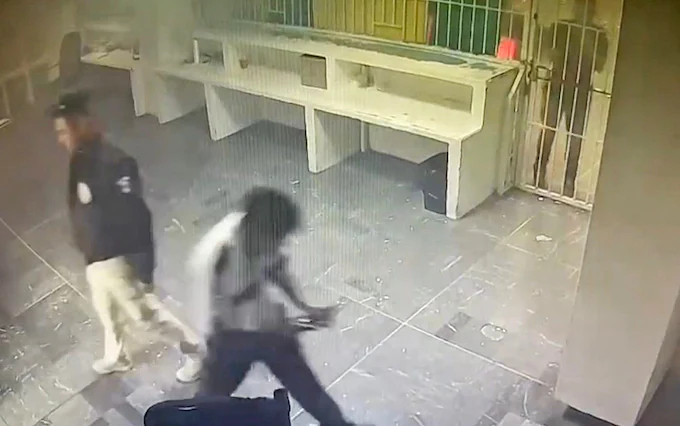
The horrific deaths of more than 40 migrants and asylum seekers in a fire while padlocked inside a cell in Mexico’s Ciudad Juárez migrant detention centre (“Estacion Migratoria”) have spurred calls to close the country’s notorious detention centres and led to the opening of a homicide investigation into detention centre staff. In the aftermath of the Ciudad Juárez detention tragedy, a group of some three dozen migrant advocacy organisations bluntly stated, “Mexico’s immigration policy kills.”
The fire, which broke out in the early hours of 28 March, claimed the lives of dozens of men from Central and Southern America, many of whom had been rounded up from the streets of Ciudad Juarez by immigration officials just hours earlier. A further 29 people were hospitalised with injuries. Surveillance footage from inside the centre shows flames spreading and smoke quickly filling the room, while guards hurried away without unlocking the cell or assisting the detainees.
Mexico’s President Andres López Obrador quickly blamed the fire on detainees, accusing them of setting fire to mattresses in protest after learning that they would be deported. Later, the Los Angeles Times cited an anonymous Mexican federal official who reported that the protest actually started because 68 men were crammed into a cell designed for a maximum of 50 people, and were deprived of drinking water. Others, however, have questioned detainees’ ability to set fire to mattresses, given that they are searched and stripped of their belongings when they arrive in detention.
Mexican authorities said that the deaths were being treated as homicides–the result of guards failing to release the men–and that they plan to arrest eight security guards (three National Migration Institute employees, and five employees of the private security company Servicios Especializados de Investigación y Custody (SEICSA)). Commenting on the event, the country’s Secretary of Security and Citizen Protection said: “There is obviously a grave crime. These were human lives. It’s unforgivable.”
In the Global Detention Project’s 2021 study of Mexico’s immigration detention system, we reported that the country maintains one of the world’s largest immigration detention systems, which includes several dozen detention centres (euphemistically called estaciones migratorias, or “migration stations”), where authorities detain tens of thousands of people each year. In 2022, 318,660 migrants were reportedly detained by the country.
U.S. efforts to curb the number of people seeking asylum have spurred Mexican authorities to ramp up efforts to intercept, arrest, and detain migrants and asylum seekers. At the same time, limits on the number of people who can claim asylum in the U.S., including those introduced during the Biden administration, have led to growing numbers of migrants and asylum seekers stuck in border towns, leaving them acutely vulnerable to abuses. As the IRC said in a statement: “As Mexico receives historic numbers of new asylum claims and the U.S. continues to implement policies that push asylum seekers back into Mexico, humanitarian infrastructure in the country is increasingly strained and more people are stuck in highly vulnerable situations.”
In recent years, the government has blocked NGOs from accessing detention centres, prompting one observer to describe them as “black boxes.” However those who have managed to access them have reported terrible conditions. In 2017 for example, the Consejo Ciudadano del Instituto Nacional de Migración described instances of violence and excessive use of force by National Migration Institute personnel; lack of access to information, legal assistance, or due process rights; overcrowding; and poor sanitation. According to people who have entered the Ciudad Juárez Detention Centre, all cells are padlocked and no medical assistance is provided.
The Ciudad Juárez case is reflective of a broader problem in the management of immigration detention centres across the globe. Said the GDP’s Michael Flynn, “The cruel and horrific nature of the deaths in Ciudad Juárez have revealed the often brutal treatment migrants face in Mexican detention centres, but the grim reality is that immigration custody can be a death sentence for people in every region of the world.”
Flynn points to the recent death in a detention centre in Bangkok, Thailand, of the Uyghur asylum seeker Aziz Abdullah, who had been detained for more than nine years in terrible conditions and whose complaints about his spiralling ill-health had been ignored by detention centre staff for four years. “But these horrific deaths in detention are not unique to the developing world,” Flynn points out. “They happen in wealthy countries too, including in Mexico’s neighbour, the United States, where observers have accused immigration officials officials of “fatal neglect” in their treatment of immigration detainees, leading to a growing list of detention fatalities.”


